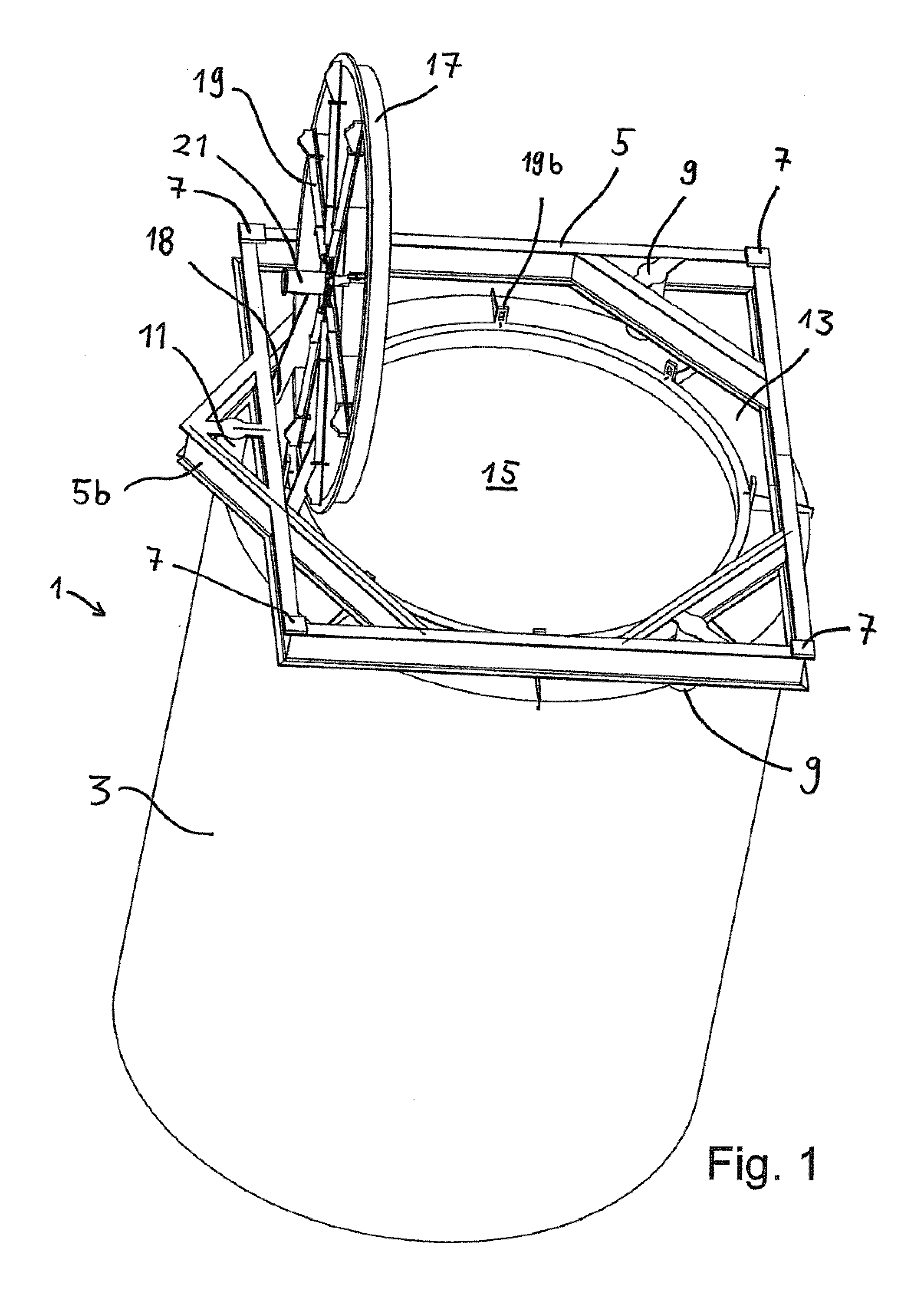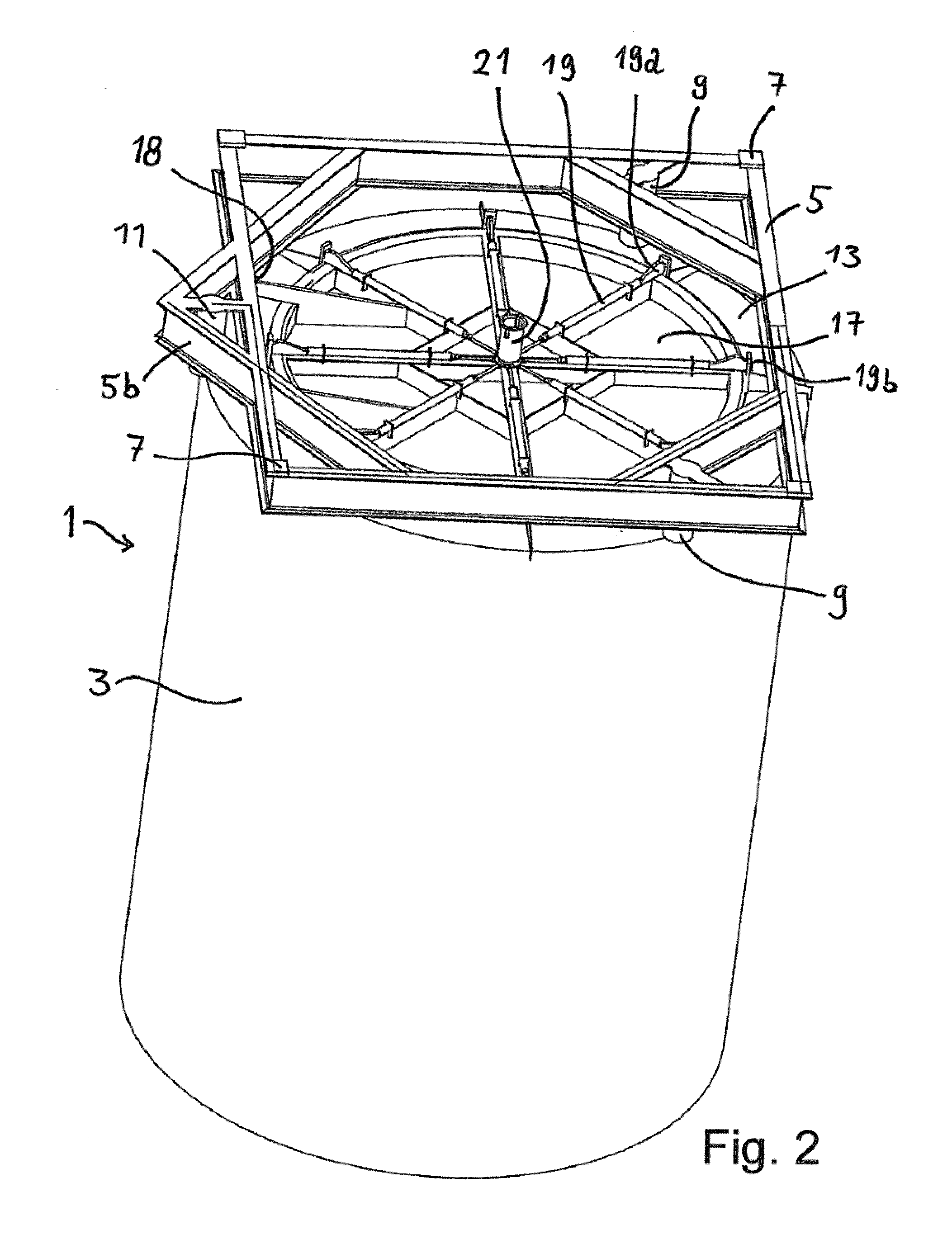Subsea anchor
a technology for anchors and submerged bodies, applied in anchors, vessel construction, borehole/well accessories, etc., can solve the problems of reducing the added mass, disadvantageous affecting the crane assembly, and disadvantageous affecting the top hatch of the prior ar
- Summary
- Abstract
- Description
- Claims
- Application Information
AI Technical Summary
Benefits of technology
Problems solved by technology
Method used
Image
Examples
Embodiment Construction
[0015]Whereas some main features of the invention has been described in general terms above, a more detailed non-limiting description of an example of embodiment will be given in the following with reference to the drawings, in which
[0016]FIG. 1 is a perspective view of an anchor according to the invention, with a top hatch in an open position;
[0017]FIG. 2 is a perspective view of the anchor in FIG. 1, with the top hatch in the closed position;
[0018]FIG. 3 is a top view of the anchor with the top hatch in the closed position;
[0019]FIG. 4 is a side cross section view of the top section of the anchor;
[0020]FIG. 5 is a cross section segment view of the top hatch and a sealing means;
[0021]FIG. 6 is a cross section view of a sealing means between the top hatch and a top plate; and
[0022]FIG. 7 is a perspective view of an alternative embodiment involving an assembly comprising an anchor according to the invention and a well template.
[0023]FIG. 1 shows an anchor 1 according to the present i...
PUM
 Login to View More
Login to View More Abstract
Description
Claims
Application Information
 Login to View More
Login to View More - R&D
- Intellectual Property
- Life Sciences
- Materials
- Tech Scout
- Unparalleled Data Quality
- Higher Quality Content
- 60% Fewer Hallucinations
Browse by: Latest US Patents, China's latest patents, Technical Efficacy Thesaurus, Application Domain, Technology Topic, Popular Technical Reports.
© 2025 PatSnap. All rights reserved.Legal|Privacy policy|Modern Slavery Act Transparency Statement|Sitemap|About US| Contact US: help@patsnap.com



